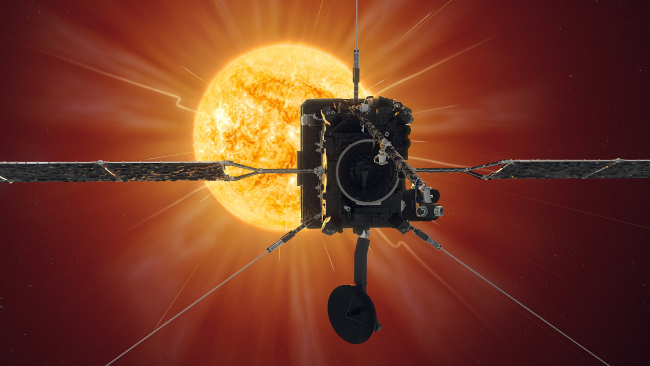
The Solar Orbiter mission was developed to study the Sun and the inner heliosphere. It's primarily an ESA mission with specific contributon (the launcher) from NASA. It has ten onboard instruments, with principal Investigators from Belgium, France, Germany, Italy, Spain, Switzerland, the United Kingdom and the United States.
The Solar Orbiter probe was launched from Cape Canaveral on February 10, 2020. The spacecraft will have several planetary flybys in order to reach its highly elliptical orbit (aphelion 0.9 AU and perihelion 0.28 AU) around the Sun, which will take it as close as 42 million kilometers to our central star. It's primary scientific goal is to observe the solar wind, its physical parameters and evolution in order to answer the main question: "How does the Sun create and control the heliosphere?". In 2025 it will reach an orbital inclination of 17° (relative to the Ecliptic), which will later increase to 24°. This observational position will allow researchers to study the southern and northern regions of the Sun, to help us understand how the Sun's magnetic field is formed. The spacecraft's angular velocity will approximately match the Sun's rotation.
The Wigner RCP and SGF was involved in the development of the EGSE for the magnetometer (MAG), which earned our team a Co-Investigator status. The principal investigator of MAG is Tim Horbury from the Imperial College, London. The magnetometer will perform high-precision, in-situ measurements of the heliospheric magnetic field, which will allow us to study the origin and the evolution of the interplanetary magnetic field (short and long term). We will also be able to analyze the acceleration mechanisms of high energy solar particles that will contribute to our better understanding of certain processes governing space weather.